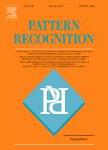版权所有:内蒙古大学图书馆 技术提供:维普资讯• 智图
内蒙古自治区呼和浩特市赛罕区大学西街235号 邮编: 010021

作者机构:Univ N Carolina Dept Comp Sci Charlotte NC 27541 USA Florida Int Univ Sch Comp & Informat Sci Miami FL USA Univ Elect Sci & Technol China Chengdu Peoples R China IBM Corp Almaden Res Ctr San Jose CA USA
出 版 物:《PATTERN RECOGNITION》 (图形识别)
年 卷 期:2017年第63卷
页 面:680-688页
核心收录:
学科分类:0808[工学-电气工程] 08[工学] 0812[工学-计算机科学与技术(可授工学、理学学位)]
基 金:Div Of Information & Intelligent Systems Direct For Computer & Info Scie & Enginr Funding Source: National Science Foundation
主 题:Neuron morphology Large-scale retrieval Binary coding
摘 要:Morphological retrieval is an effective approach to explore large-scale neuronal databases, as the morphology is correlated with neuronal types, regions, functions, etc. In this paper, we focus on the neuron identification and analysis via morphological retrieval. In our proposed framework, multiple features are extracted to represent 3D neuron data. Because each feature reflects different levels of similarity between neurons, we group features into different hierarchies to compute the similarity matrix. Then, compact binary codes are generated from hierarchical features for efficient similarity search. Since neuronal cells usually have tree-topology structure, it is hard to distinguish different types of neurons simply via traditional binary coding or hashing methods based on Euclidean distance metric and/or linear hyperplanes. Therefore, we employ an asymmetric binary coding strategy based on the maximum inner product search (MIPS), which not only makes it easier to learn the binary coding functions, but also preserves the non-linear characteristics of the neuron morphological data. We evaluate the proposed method on more than 17,000 neurons, by validating the retrieved neurons with associated cell types and brain regions. Experimental results show the superiority of our approach in neuron morphological retrieval compared with other state-of-the-art methods. Moreover, we demonstrate its potential use cases in the identification and analysis of neuron characteristics from large neuron databases.